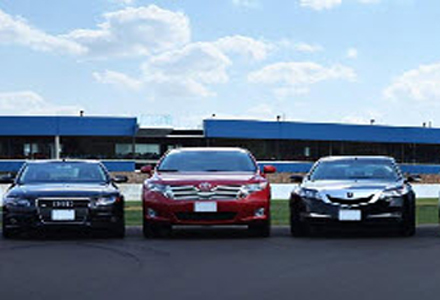According to %$Linker:
The studies are the latest in a series by Jessica Cicchino, IIHS vice president for research, that evaluates different crash avoidance features by looking at data from police-reported crashes Police reports include information on the circumstances of a crash, making it possible to look specifically at the types of crashes that particular technologies are designed to address, rather than just looking at crash rates generally. Cicchino's previous studies found that front crash prevention with automatic braking cuts the rate of front-to-rear crashes in half and that rear view cameras can prevent about 1 in 6 backing crashes.
Results of the new study indicate that lane departure warning lowers rates of single-vehicle, sideswipe and head-on crashes of all severities by 11 percent and lowers the rates of injury crashes of the same types by 21 percent. That means that if all passenger vehicles had been equipped with lane departure warning, nearly 85,000 police-reported crashes and more than 55,000 injuries would have been prevented in 2015.
The analysis controlled for driver age, gender, insurance risk level and other factors that could affect the rates of crashes per insured vehicle year.
A simpler analysis that didn't account for driver demographics found that lane departure warning cut the fatal crash rate 86 percent. There weren't enough fatal crashes to include them in a statistical model that controlled for demographics. In the simpler analysis, the rate of all crashes was 18 percent lower for vehicles equipped with the feature, and the rate of injury crashes was 24 percent lower.
"This is the first evidence that lane departure warning is working to prevent crashes of passenger vehicles on US roads," Cicchino says. "Given the large number of fatal crashes that involve unintentional lane departures, technology aimed at preventing them has the potential to save a lot of lives."
The new study included vehicles with optional lane departure warning from six manufacturers:
Cicchino used the same method to examine blind spot detection systems, which provide a visual alert when an adjacent vehicle is in the driver's blind spot. In this case, she focused on crashes in which the vehicles were changing lanes or merging. Fiat Chrysler, General Motors, Honda, Mazda, Mercedes-Benz and Volvo vehicles were included.
Controlling for other factors that can affect crash risk, blind spot detection lowers the rate of all lane-change crashes by 14 percent and the rate of lane-change crashes with injuries by 23 percent. Although only the reduction in crashes of all severities was statistically significant, the effect for injury crashes was consistently in the expected direction for 5 of the 6 manufacturers studied.
"Blind spot detection systems work by providing additional information to the driver. It's still up to the driver to pay attention to that information and use it to make decisions," Cicchino says. "That said, if every passenger vehicle on the road were equipped with blind spot detection as effective as the systems we studied, about 50,000 police-reported crashes a year could be prevented."
Lane departure warning, blind spot detection help drivers avoid trouble, say researchers
According to new research from the US Insurance Institute for Highway Safety (IIHS), lane departure warning, a technology designed to address an often-fatal type of crash, is preventing crashes on US roads. A separate study shows that blind spot detection also is yielding benefits when it comes to preventing lane-change crashes.








